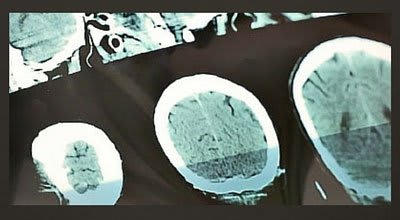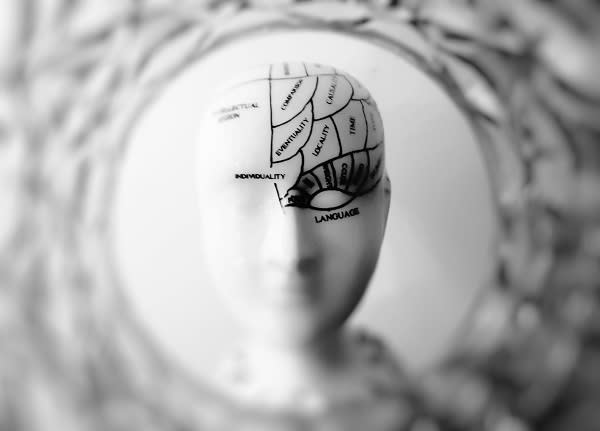By Todd S. Miller, Neurointerventional Radiology
Ruptured Brain Aneurysms and Stroke Are Serious Matters
In the event of a true emergency, call 911.
To learn more about Stamford Health's stroke services, visit this page.
At Stamford Hospital, we have an experienced team available to provide leading-edge treatments for brain aneurysms. I am excited to share my enthusiasm for our cerebrovascular program. We are able to offer advanced therapy to our patients who no longer need to leave Fairfield county. In the familiar and award-winning environment of Stamford Hospital, we can provide treatment for brain aneurysms at a university level.
What is a brain aneurysm, anyway?
A brain aneurysm is a weak, bulging area in an artery in the brain, like a thin balloon or a weak spot on a tire’s inner tube. Because its walls may be thin, an aneurysm is at risk of rupturing. Aneurysms are most common in people aged 35-60.
What triggers a brain aneurysm?
Brain aneurysms rarely happen in childhood. They usually develop in adults. The most common factors leading to aneurysm growth and rupture are smoking, high blood pressure, and certain genetic conditions.

What happens if a brain aneurysm ruptures?
If brain aneurysm ruptures, blood spills into the space between the brain and its coverings. This is called subarachnoid hemorrhage, or a serious type of stroke. This type of stroke is fatal 40% of the time, and leaves over half of survivors disabled.
How common are unruptured brain aneurysms?
Between 2 and 4 percent of the adult population has an unruptured brain aneurysm. That would be about 2,000 people in Fairfield county. Women are more likely than men to have a brain aneurysm and have a higher risk of brain aneurysm rupture than men. Most brain aneurysms are small (only a few millimeters in diameter) and have a very low risk of rupture (<1% per year).
What are the symptoms of a brain aneurysm?
Most brain aneurysms are small, so it's unusual to have symptoms before they rupture.
- Some aneurysms grow larger and can cause headache or interfere with the nerves that help the brain control eye movements.
- When an aneurysm ruptures, it may feel like the "worst headache of your life."
- You may have a stiff neck, discomfort with bright light, fainting, seizure or vomiting. If you usually don't have bad headaches and experience any of these symptoms, please go to the nearest emergency room.
How are brain aneurysms detected?
Brain aneurysms can be detected with a CT or MRI scan of the brain tailored to look at the blood vessels. A doctor who specializes in the blood vessels and arteries of the brain (cerebrovascular physician), will help you decide whether to treat your brain aneurysm.
We can also detect a type of serious stroke (called a subarachnoid hemorrhage) from a ruptured brain aneurysm on a routine CT scan of the head. We also may order spinal tap if symptoms are severe and the head CT does not reveal the cause.
Do you need surgery for brain aneurysms?
In the past, open brain surgery was the only treatment for brain aneurysms. The surgeon would place a metal clip between the aneurysm and the vessel from where it started. Thanks to advancement in techniques, we no longer use open brain surgery to treat brain aneurysms.
Instead of open brain surgery, we place a small plastic tube about the diameter of spaghetti from the blood vessel into the groin. We then navigate this tube into the brain using x-rays and place metal coils into the aneurysm. The goal is to prevent blood from flowing into the aneurysm which stops the aneurysm from growing or bursting.
Brain aneurysm treatment at Stamford Hospital
- The process begins with an initial consultation where we review your medical and family history.
- We will then look at the scans together to understand the aneurysm size, location, and shape.
- Often, we will schedule a blood vessel imaging test (catheter angiogram) before treatment. This helps us to ensure that we have a precise understanding of the aneurysm shape, size and the location and sizes of the nearby vessels.
- The blood vessel imaging test takes about an hour and you'll be in the hospital for about 4 hours. Afterward, there is usually some soreness and a small bruise where we accessed the blood vessel. This lasts a few days.
The day of the brain aneurysm treatment is a bit more involved.
- You'll fast the night before and come in the next morning.
- We'll give you general anesthesia to ensure you’re very still during treatment. This increases the safety and decreases the duration of the procedure.
- After the treatment, you'll spend the night in the intensive care unit for observation.
- In the morning, we'll move you to a hospital room and plan on discharging you the next morning.
- Recovery is like the blood vessel imaging test, with some soreness and bruising over the groin access site.
When it comes to ruptured brain aneurysms or stroke, time is of the essence. In a true emergency, dial 9-11
Featured Expert/ Author









